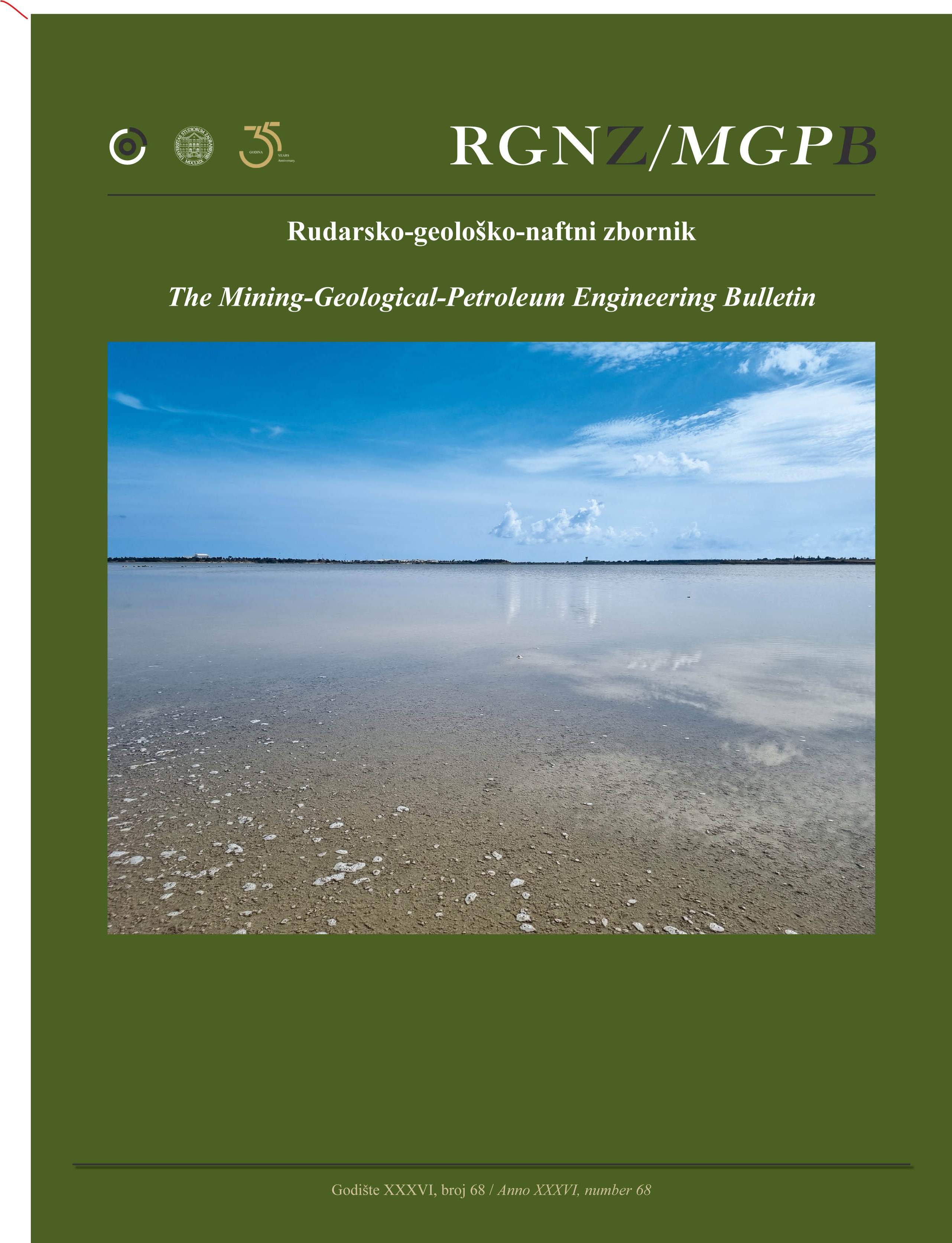Laboratory investigation of the effect of sodium silicate and bentonite on the mechanical properties of the grout behind the segment in mechanized excavation
DOI:
https://doi.org/10.17794/rgn.2024.2.5Keywords:
mechanized excavation, two-component grout, bentonite, sodium silicate, Gel-time, uniaxial strengthAbstract
Nowadays, the use of Tunnel Boring Machines (TBM) in tunnelling has increased in urban environments. One of the effective parameters in the excavation process is the use of grout behind the segments to prevent ground settlement and penetration into the tunnel. The investigation of the effects of two-component grout (bentonite and sodium silicate) on the mechanical properties of the grout plays a crucial role in mechanized excavation. Therefore, this article aims to investigate the effect of various parameters on the properties of the two-component grout. Eight different mixing designs were considered in this research. Gel-time tests, viscosity test, water bleeding test, uniaxial compressive strength tests (UCS), and direct shear tests were conducted for each mixing design. The UCS tests were performed for eight mixing designs and at four different ages of the grout, while the direct shear test was conducted for five mixing designs at the age of one day. The results showed that increasing the sodium silicate content from 4% to 9.4% reduced the Gel-time to 7 seconds, and increasing the bentonite content from 2.3% to 4.58%, increased the marsh funnel time to 12 seconds. The uniaxial compressive strength of the grout increased to 0.682 MPa at the age of 28 days. Finally, by conducting the direct shear test on the grout and obtaining the parameters of cohesion and internal friction angle, it was determined that these two parameters depend on the values of bentonite and sodium silicate, and they change with the increase or decrease of these grout components.
Downloads
Published
How to Cite
Issue
Section
License
Copyright (c) 2024 Erfan Khoshzaher, Samaneh Khodaei, Hamid Chakeri

This work is licensed under a Creative Commons Attribution 4.0 International License.
Creative Commons-BY
Authors who publish with this journal agree to the following terms:
In agreeing this form, you certify that:
- You read the ethical codex of the RGN zbornik available at journal web.
- You submitted work is your original work, and has not previously been published and does not include any form of plagiarism.
- You own copyright in the submitted work, and are therefore permitted to assign the licence to publish to RGN zbornik.
- Your submitted work contains no violation of any existing copyright or other third party right or any material of an obscene, libellous or otherwise unlawful nature.
- You have obtained permission for and acknowledged the source of any illustrations, diagrams or other material included in the work of which you are not the copyright owner.
- You have taken due care to ensure the accuracy of the work, and that, to the best of your knowledge, there are no false statements made within it.
- All co-authors of this submitted work are aware of, and in agreement with, the terms of this licence and that the submitted manuscript has been approved by these authors.
Publication licence
You retain copyright in your submitted work, according to journal license policy (CC-BY). By signing this form you agree that RGN zbornik may publish it under the publication licence. In summary the licence allows the following:
Anyone is free:
- To copy, distribute, display, and perform the work.
- To make derivative works.
Under the following conditions:
- The original author must always be given credit.
- The work may not be used for commercial purposes.
- If the work is altered, transformed, or built upon, the resulting work may only be distributed under a licence identical to this one.
Exceptions to the licence
In addition to publishing the work printed under the above licence, RGN zbornik will also enable the work to be visible online.
The journal editorial can change the licence rules anytime but it cannot retroactively restrict author(s) rights.


